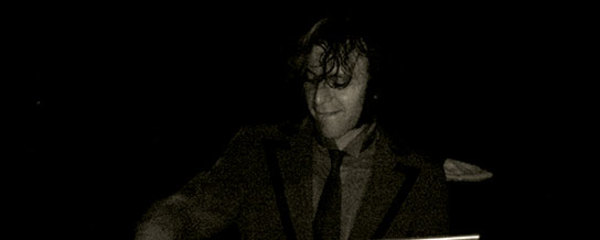Monome & Me: MIDI Mayhem
For the past couple of years, I’ve been fidgeting with an odd invention that an […]
Monome & Me: MIDI Mayhem
For the past couple of years, I’ve been fidgeting with an odd invention that an […]

For the past couple of years, I’ve been fidgeting with an odd invention that an equally odd musician, Brian Crabtree, came up with: The monome 100h. It’s a combination of sequencer, Lite-Brite, and sampler with MacGyver-esque possibilities–all addictively simple. Now it’s being somewhat mass-made and I wanted to introduce it, so perhaps it’ll make some sense of what I might be doing on a stage in a town near you.
First, I like to take songs I’ve produced in Pro Tools and pick choice bits from them: drum breaks, basslines, synth pads, vocals, complete phrases. Then I’ll load these sometimes wildly inappropriate sound selections (as AIFFs) into the mlr, the open-source software built for my monome 100h (my prototype version is a 16 x 16-button grid, which connects to a laptop by MIDI cables; the newer, fancier monome 40h connects by USB), which then allows me to not only play samples simultaneously but also chop the hell out of them on the fly.
The samples or loops are mapped across a row of buttons by dragging and dropping the files on the mlr software screen. The light indicates the playback position of the sample. When I press a button, it cuts to that position of the sample. (The idea is that you visually learn the contour of the sound, like where the kick and snare are located, and can then improvise.)
Once placed, I can trigger the sound on any grid point in these 16 steps, playing the sample from that point. I can mix several groups at once, and have other sounds cancel each other out. Imagine a music measure consisting of four quarter notes: each quarter note is made of four sixteenth notes, so if I map a measure-long sound to a line, each button triggers a different sixteenth-note subdivision.
This leads to a deliriously fun decision-making process: Try to recreate a song light by light, mirroring each flipped sample from my original song? Or completely leave the past behind and fuse the existing with newly created backwards-chopped-screwed-re-pitched bits for a whole new creation?
There’s also this crazy little thing, like the button you shouldn’t press on the Great Glass Wonkavator from Charlie and the Chocolate Factory. By throwing a virtual switch in the mlr software, I can have the computer learn what buttons I press and repeat this process–Simon style–in musical time, no matter what sample set I might be choosing from. It allows my fingers a little freedom to flip other samples just as vigorously, which can lead to quite a racket.
Unsettling? Good, because it becomes a mad mix after enough bashing at light buttons. It’s all at your fingertips, literally, as every little measured flip is solidly in your control; and it’s better than some other fancy controllers because you don’t have to constantly stare at the screen. This way, you don’t have to see my face illuminated solely by laptop light–which is very unflattering, I’ve been told.
More on Daedelus

